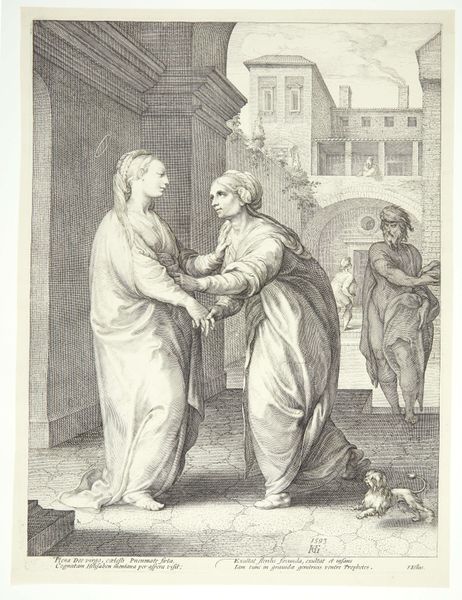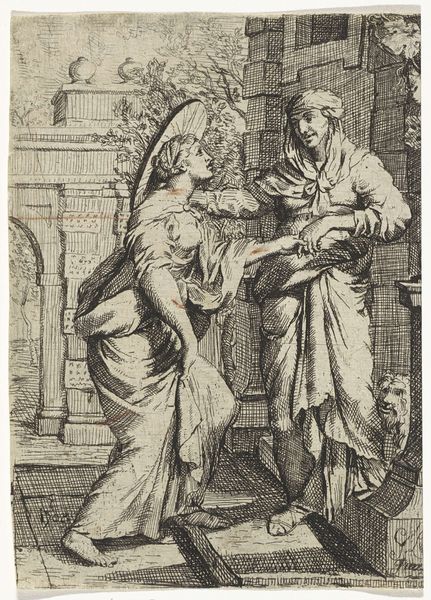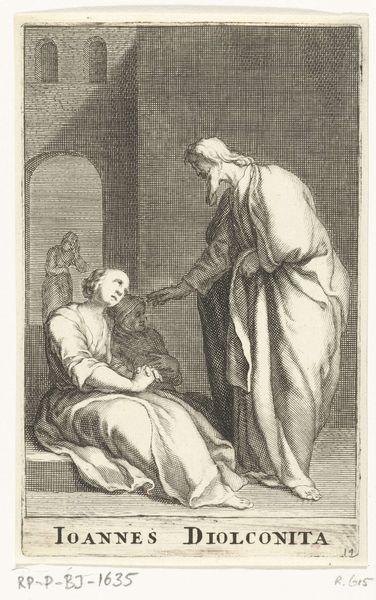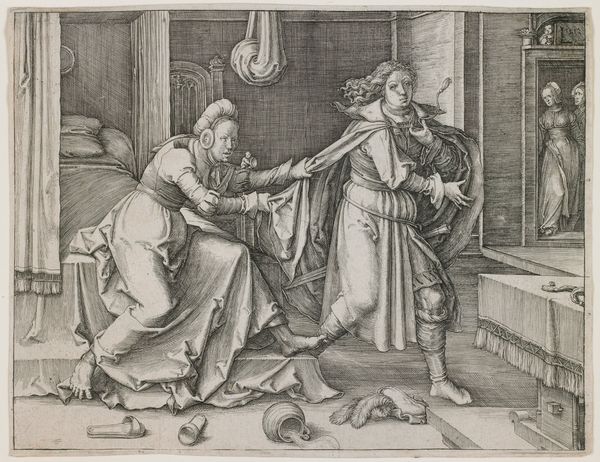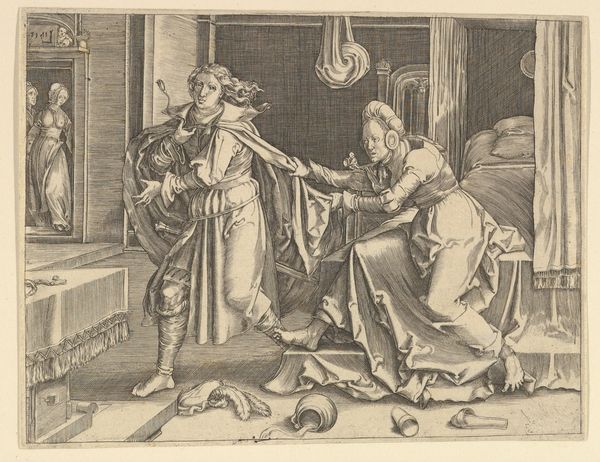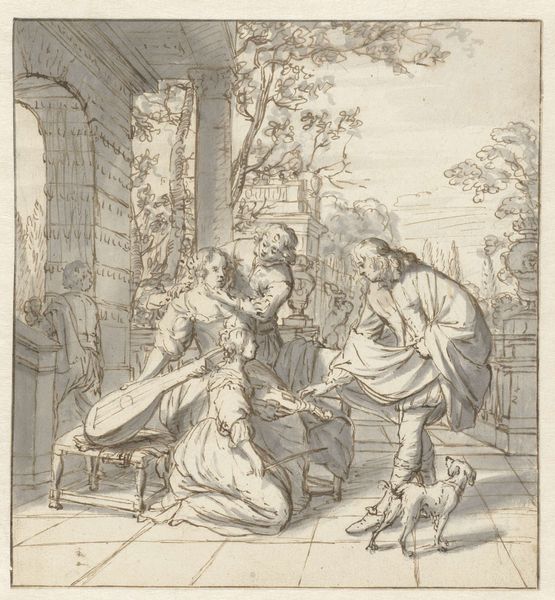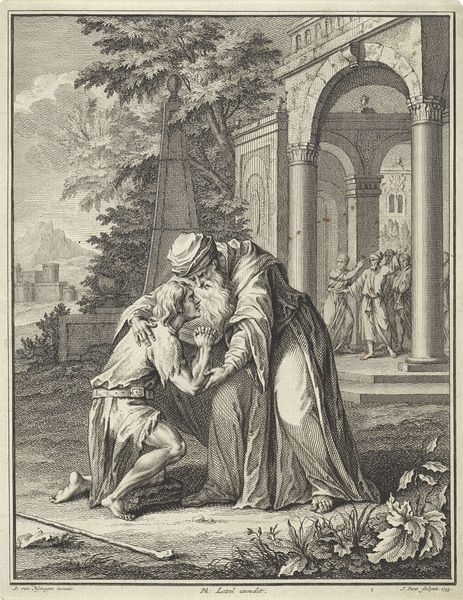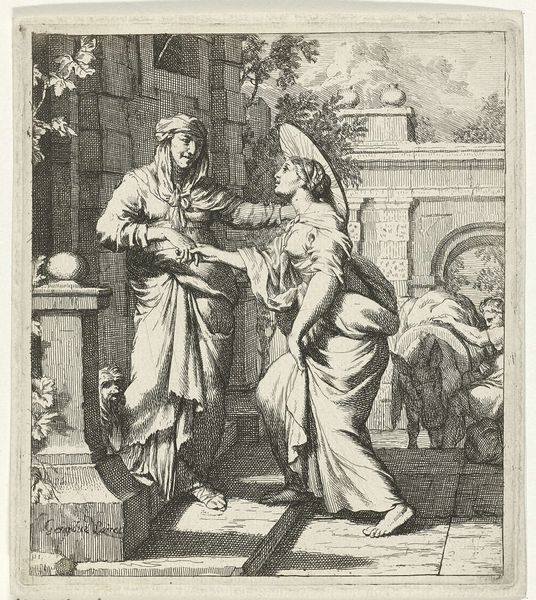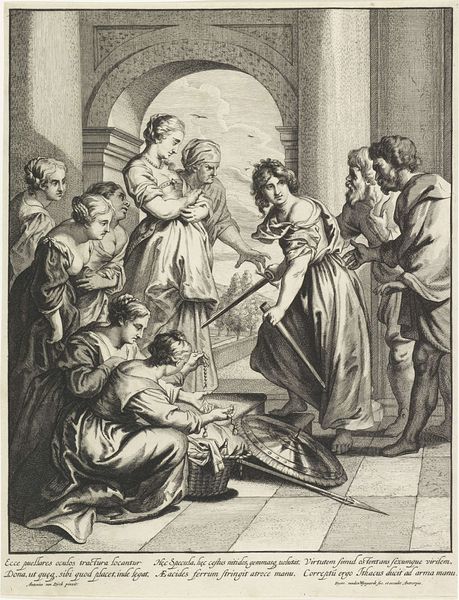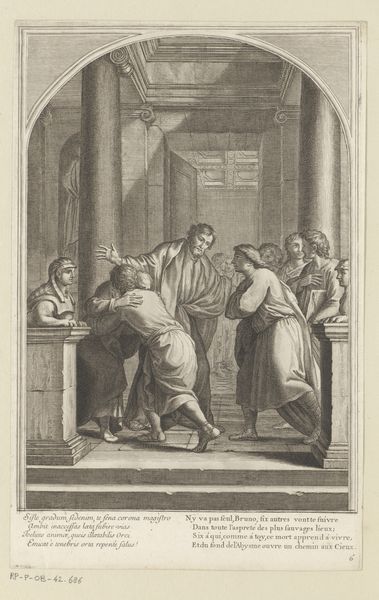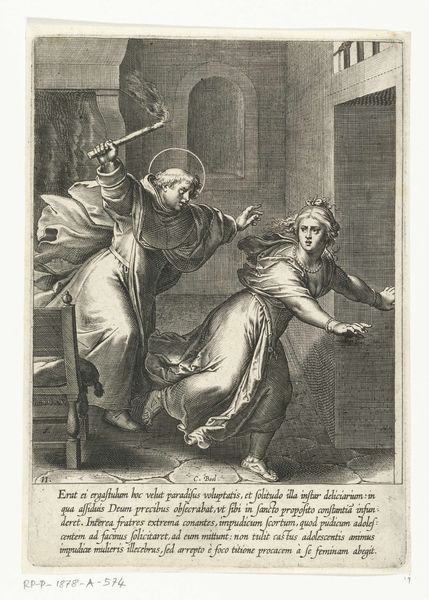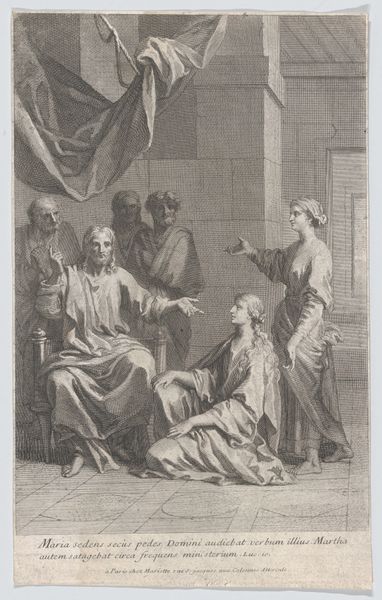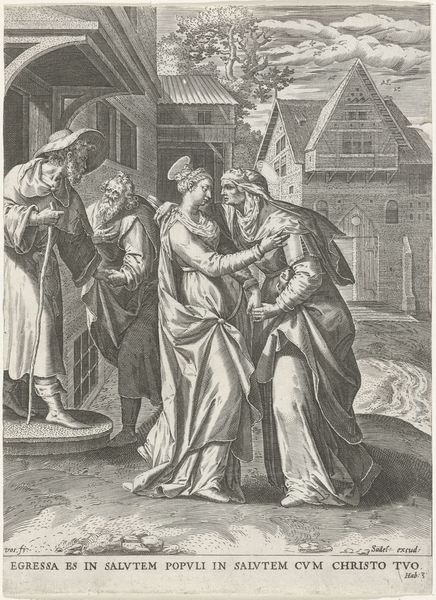
The Visitation, plate two from The Birth and Early Life of Christ 1593
0:00
0:00
drawing, print, paper, engraving
#
drawing
#
narrative-art
# print
#
mannerism
#
figuration
#
paper
#
history-painting
#
italian-renaissance
#
engraving
Dimensions: 464 × 353 (image); 480 × 355 mm (plate); cut within platemark)
Copyright: Public Domain
Curator: Let’s turn our attention to this remarkable engraving from 1593, "The Visitation, plate two from The Birth and Early Life of Christ," created by Hendrick Goltzius. Editor: The intricate linework is stunning! It feels almost architectural, those draped figures composed of precise, deliberate strokes. Curator: Absolutely. Goltzius was a master engraver. But the print itself served a clear purpose. Consider the Counter-Reformation's impact. This piece offered visual reinforcement of core Christian narratives during a period of theological challenge and debate. Editor: I see that. But ignoring the social context for a moment, observe the figures, the subtle interplay of hands, the way the drapery falls—each element meticulously rendered to guide the viewer’s eye. Goltzius directs our gaze in a carefully structured rhythm. Curator: Precisely, the gestures, the spatial relationships, these were carefully considered for a 16th-century audience attuned to visual rhetoric. The Visitation itself—Mary's visit to Elizabeth—symbolizes the fulfillment of prophecy, and strengthens a message sanctioned by religious authorities. Editor: And what about that peculiar little dog in the lower right? Is it symbolic? Its presence is so understated, yet it demands a closer look. Is this an ironic or humorous touch from Goltzius? Curator: Perhaps it is meant to soften the drama, to domesticate the sacred. Consider the wider societal context—dogs appear often in domestic portraiture from the time; its inclusion lends a sense of accessibility. Editor: Possibly. Still, focusing on line alone, you appreciate how the varying widths suggest volume, how the cross-hatching builds density, particularly in Elizabeth’s robes. He is making Mary's drapery much lighter, while using many more lines for Elizabeth's clothes; such contrasts are crucial for a sense of depth. Curator: And also hierarchy. Through this juxtaposition Goltzius is pointing towards Mary's significance in the scene as she embodies an ideal, central to religious doctrine. It is all orchestrated towards didactic effectiveness within the confines of religious patronage. Editor: Yes, seeing how everything in this carefully arranged image ultimately reinforces thematic and emotive qualities does provide some insights into the nature of art during the Renaissance period. Curator: Indeed, this close analysis is useful for situating the work’s significance—we can't fully appreciate "The Visitation" without an examination of its historical roots, can we?
Comments
No comments
Be the first to comment and join the conversation on the ultimate creative platform.
